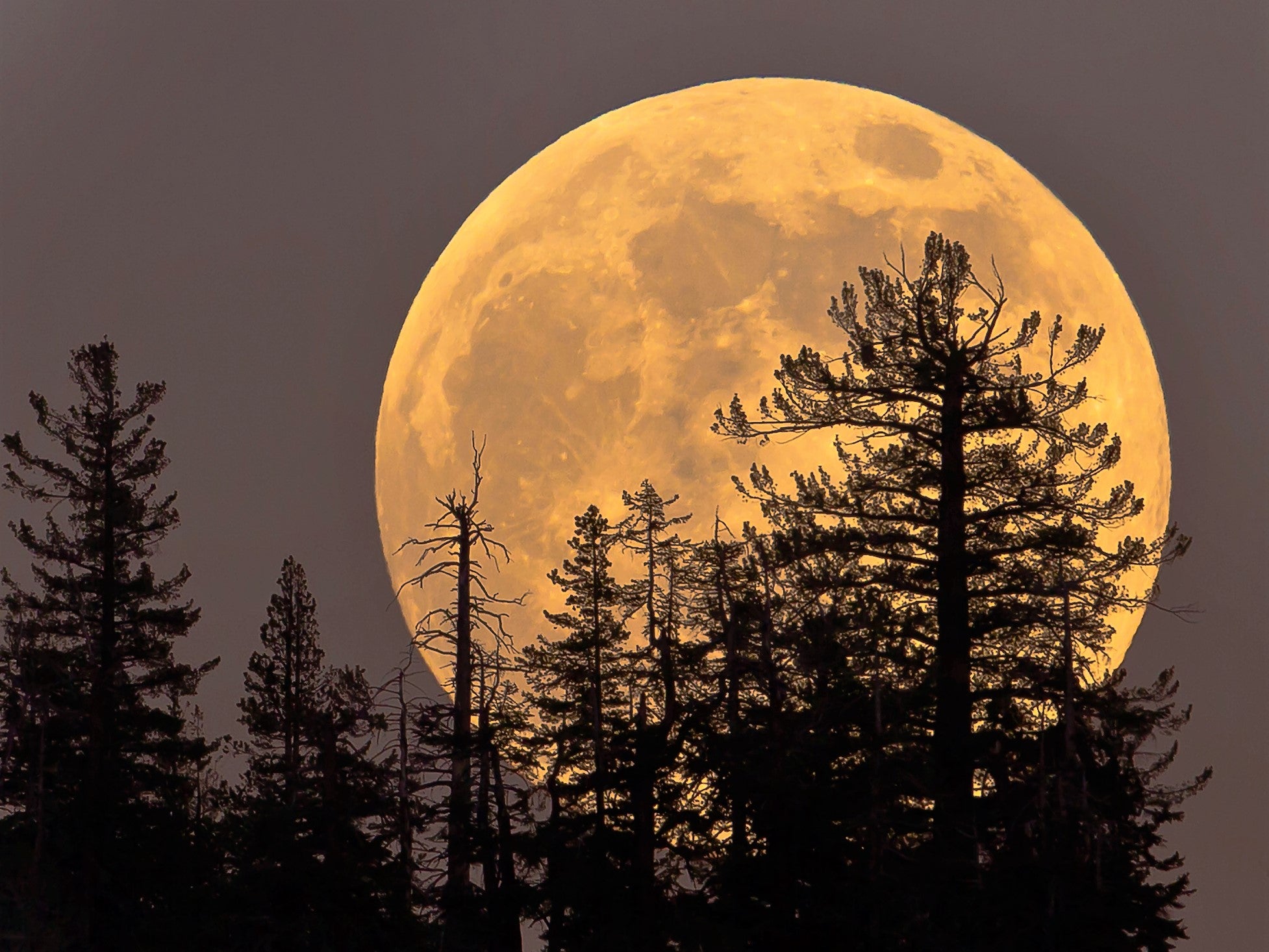Full moon 2021: What is Worm ‘supermoon’ and how to see it this weekend?
Worm Moon peaks on Sunday but is visible for three days either side

The third full moon of 2021 will appear this weekend, offering sky gazers the opportunity to see the biggest and brightest moon of the year so far.
March’s full moon is traditionally known as the Worm Moon in the northern hemisphere, as it comes at the end of winter when the ground begins to thaw.
Nasa executive Gordon Johnston also noted that this month’s moon could be considered a “supermoon” by some definitions due to its proximity to Earth.
First coined by the astrologer Richard Nolle in 1979, a supermoon is generally classed as a new or full moon that is within 90 per cent of its perigee – its closest approach to Earth.
“Supermoons have become popular over the last few decades. Depending upon how you interpret this definition, in a typical year there can be two to four full supermoons in a row and two to four new supermoons in a row,” Mr Johnston wrote in a blog post.
“Different publications use slightly different thresholds for deciding when a full Moon is close enough to the Earth to qualify as a supermoon. For 2021, some publications consider the four full Moons from March to June, some the three full Moons from April to June, and some only the two full Moons in April and May as supermoons.”
Read more:
The moon will reach peak fullness on Sunday at 7.48pm BST – the clocks go forward 1 hour on Sunday as the UK switches from GMT to BST – however it will appear full in the sky from Saturday morning through to Monday night.
Viewing tips from astronomers and photographers to get the best view include avoiding areas with high levels of light pollution and keep away from sources of artificial light like smartphone screens.
The moon will rise at 4.40pm on Saturday afternoon and at 7.06pm on Sunday.
The weather forecast is mixed across the UK this weekend, with the Met Office warning of cloud and heavy rain in the north west of England and Scotland.
Join our commenting forum
Join thought-provoking conversations, follow other Independent readers and see their replies
Comments
Bookmark popover
Removed from bookmarks